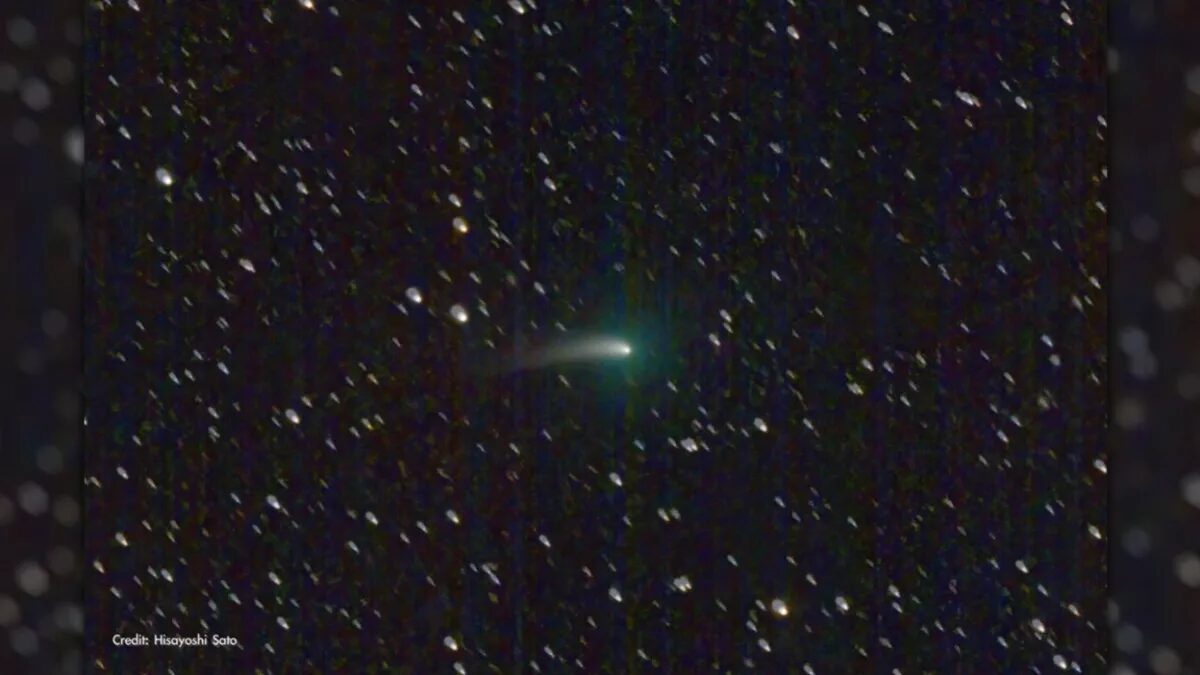The comet C/2022 E3 (ZTF)
could be bright enough to be spotted with the naked eye as it passes the sun and Earth at the end of the first month of 2023.

© Hisayoshi Sato via NASA/JPL-CaltechAn image of the Comet C/2022 E3 (ZTF) taken by astrophotographer Hisayoshi Sato as seen in a still image from a NASA video.
At the start of 2023 Earth will be visited by a
newly discovered comet that may just be bright enough to be spotted with the naked eye.The
comet, named C/2022 E3 (ZTF), is currently passing through the inner solar system. It will make its closest approach to
the sun, or perihelion, on Jan. 12, and will then whip past
Earth making its closest passage of our planet, its perigee, between Feb. 1 and Feb. 2.
If the comet continues to brighten as it currently is, it could be visible in dark skies with the naked eye. This is difficult to predict for comets, but even if C/2022 E3 (ZTF) does fade it should still be visible with
binoculars or a
telescope for a number of days around its close approach.
According to NASA,
observers in the Northern Hemisphere will be able to find the comet in the morning sky, as it moves in the direction of the northwest during January. C/2022 E3 (ZTF) will become visible for observers in the Southern Hemisphere in early February 2023.

Comment: Other videos of the event: